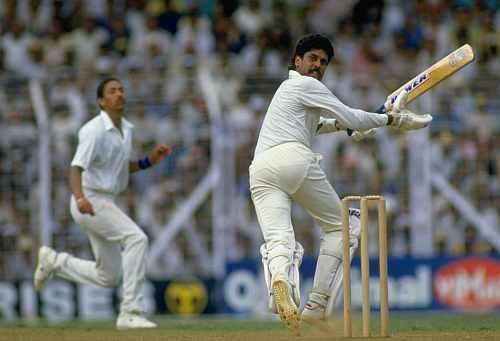
If you have a question relating to cricket and did not know who to ask, bounce them off to Rajneesh Gupta. Each week he will pick questions readers send him and provide answers. Your queries should be addressed to: Ask Rajneesh on Facebook or askrajneesh@rediffmail.com
Is it true that Kapil Dev was never run-out in his entire Test career? Which player played most innings without getting dismissed run-out in Tests? - Yogesh Prajapathy
In 184 innings of 131 Tests, Kapil Dev was never dismissed run-out, which is also a Test record.
Among the current players, England's Alastair Cook, who has not been dismissed in this fashion in 131 Test innings so far, can threaten Kapil's record, but he has a long way to go.
The other players with 100-plus innings, without ever getting run-out, are Pakistan's Mudassar Nazar (116) and England's Paul Collingwood (115), Graeme Hick (114) and Peter May (106).
Though Kapil was never run-out, he was involved in two run-outs during his Test career. It was Syed Kirmani who got run-out both times, with Kapil as partner at the other end.

Against which country did Sachin Tendulkar score his fastest fifty in ODIs, and in how many balls? - Takshak Sharma
Sachin Tendulkar's fastest ODI fifty came in the World Cup game against Bermuda at Port-of-Spain on March 19, 2007, off 26 balls.
He also has a 28-ball fifty against Zimbabwe, at Sharjah on November 13, 1998, in the Champions Trophy final. On two occasions, Tendulkar scored a 30-ball fifty, against Pakistan and Australia respectively.
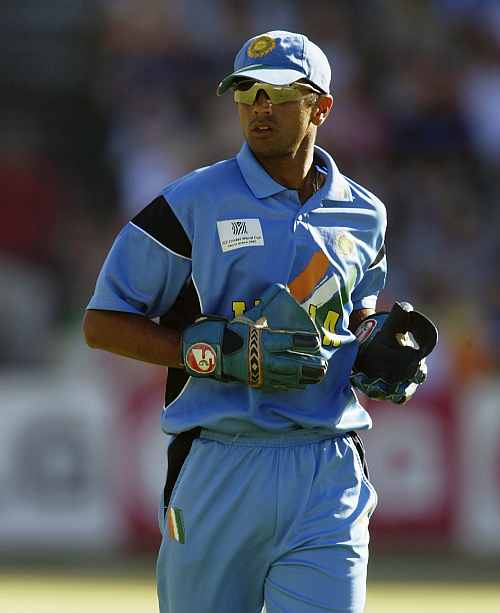
How many wicketkeepers have scored a century in World Cups, in 50 or 60-over format games? - T Sai Kumar
A total of seven wicketkeepers have scored a century in a World Cup match. Interestingly, all seven have come in the 50-overs' format. Zimbabwe's Dave Houghton was the first to do so, when he scored 142 against New Zealand at Hyderabad on October 10, 1987.
Other keepers to score a century are (in chronological order): Andy Flower (115 on debut, v Sri Lanka, New Plymouth, 23-02-1992), Rahul Dravid (145, v Sri Lanka, Taunton, 26-05-1999, Adam Gilchrist (149, v Sri Lanka, Bridgetown, 28-04-1997 – in final), AB de Villiers (107, v West Indies, Delhi, 24-02-2011), Brendon McCullum (101, v Canada, Mumbai WS, 13-03-2011) and Kumar Sangakkara (111, v New Zealand, Mumbai WS, 18-03-2011).
When all 11 players bowled in the same innings Is there any incident in international cricket when all 11 bowled in the same innings. If yes, please give details. - Mohan
This happened four times in Test cricket:
| Team | Opponents | Venue | Season |
| England | Australia (551) | The Oval | 1884 |
| Australia | Pakistan (382-2) | Faisalabad | 1979-80 |
| India | West Indies (629-9d) | St.John's | 2001-02 |
| South Africa | West Indies (747) | St.John's | 2004-05 |
The most number of bowlers used by a side in an innings in One-day internationals are 9.
| Team | Opponents | Venue | Season |
| New Zealand | Sri Lanka (188-6) | Auckland | 1982-83 |
| West Indies | Bangladesh (219-5) | Dhaka | 1999-00 |
| India | Sri Lanka (320-8) | Colombo RPS | 2008-09 |
| Afghanistan | Canada (288-8) | Sharjah | 2009-10 |
| Zimbabwe | South Africa (399-6) | Benoni | 2010-11 |
The corresponding record in Twenty20 internationals is of eight bowlers, on five occasions.
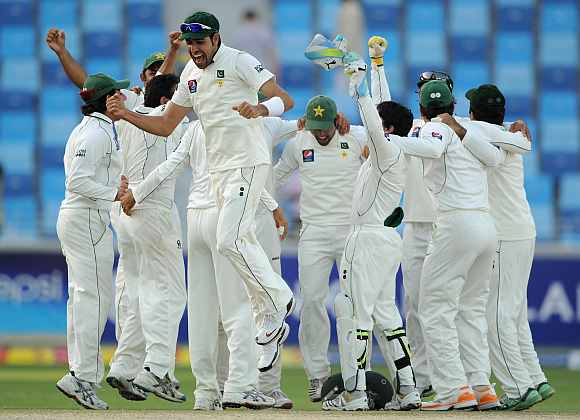
What is the record for maximum wickets to fall in a single day's Test cricket? - Ranjeet Kumar
27 wickets fell on the second day of the Lord's Test between England and Australia in 1888, which is the record of most wickets falling on a single day in Test cricket. England resumed their innings from an overnight score of 18-3 and were all out for 53.
Australia were then dismissed for 60. England batted again and were bowled out for 62, giving Australia victory by 61 runs. Interestingly, the actual playing time was just over three hours. The pitch had deteriorated drastically because of the rain.
In the 1901-02 Melbourne Test between Australia and England, 25 wickets fell on the opening day. In the 1896 Oval Test between these two countries, 24 wickets fell on the second day.
Most recently, 23 wickets fell on the second day of Cape Town Test between Australia and South Africa in November 2011.
Lowest winning total in the first innings of a Test
Pakistan recently beat England in a Test despite scoring only 99 in the first innings. Is there any other side that made a lower total in the first innings of a Test and still went on to win the game? - M. Shoaib
Pakistan's total of 99 at Dubai is the lowest winning total in the first innings of a Test match in more than 100 years, but only sixth lowest in the all-time list. The lowest ever is 45 by England at Sydney in 1886-87. The complete list:
| Total | Team | Opponents | Venue | Season | Margin |
| 45 | England | Australia | Sydney | 1886-87 | 13 runs |
| 63 | Australia | England | The Oval | 1882 | 7 runs |
| 75 | England | Australia | Melbourne | 1894-95 | 94 runs |
| 76 | England | South Africa | Leeds | 1907 | 53 runs |
| 92 | England | South Africa | Cape Town | 1898-99 | 210 runs |
| 99 | Pakistan | England | Dubai | 2011-12 | 71 runs |
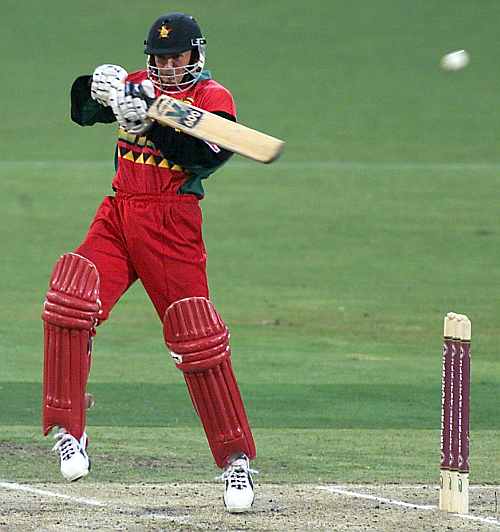
What is the longest gap (in terms of innings) between two consecutive hundreds for a batsman in one-day internationals? - Subhash Hemnani
The record is in the name of Zimbabwe's Andy Flower. After scoring a century in his very first ODI innings (115 against Sri Lanka in 1992 World Cup), Andy had to wait for 145 innings and about eight years and eight months to score his second century (120, also against Sri Lanka in the 2000 Champions Trophy in Sharjah).
India's Mohammad Azharuddin had a gap of 137 innings between his third and fourth ODI centuries.
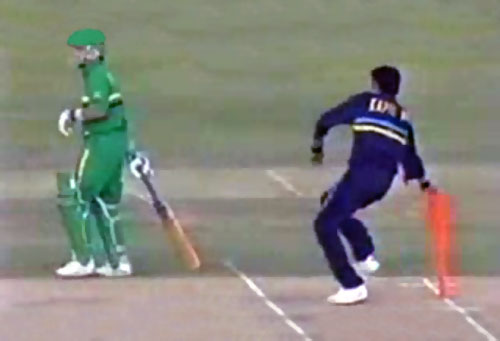
What is Mankaded in cricket? - Shruti Mishra
'Mankaded' is a term used when a bowler attempts to run-out a non-striking batsman before delivering the ball.
As a bowler enters his delivery stride, the non-striking batsman usually leaves his popping crease and walks towards the other end of the wicket so that it will take him less time to reach the other end if he and his partner choose to attempt a run.
Sometimes a batsman leaves the popping crease even before the bowler has actually delivered the ball. In such a case, bowler may attempt to run the non-striking batsman out.
Getting a batsman out this way is generally considered to be against the spirit of the game as the non-striker usually accidentally leaves the crease.
The history of such dismissals in first-class cricket goes back to the 19th century, but it is associated with Mankad since he was the first bowler to run a batsman out in this fashion in Test cricket.
The term was coined when Vinoo Mankad ran out Australia opener Bill Brown in the Sydney Test in 1947-48. As Mankad was in the act of delivering the ball, he saw Bill Brown had left his crease at the non-striker's end.
Instead of delivering the ball, Mankad whipped the bails off, with Brown well out of his crease. When the umpire gave him out, Brown raised his arm and swung it through the air in disgust.
Perhaps Brown was more disgusted with himself than Mankad, because Mankad had already warned him once for backing up too smartly in a match against an Australian XI, also at Sydney. When Brown tried to play smart again, Mankad ran him out.
In the Test match Mankad did not warn Brown before running him out, but in the light of a previous warning, and a dismissal, Brown was foolish to take liberties with Mankad.
The Australian press accused Mankad of being unsportsmanlike, although several Aussie players, including the captain Don Bradman, defended Mankad's action. It was the first such dismissal in Test cricket.
And journalists and commentators world over glued to the term 'Mankaded' and started using it every time a bowler tried to run-out a non-striker who might have moved out of his crease accidentally, without any attention of stealing a run.